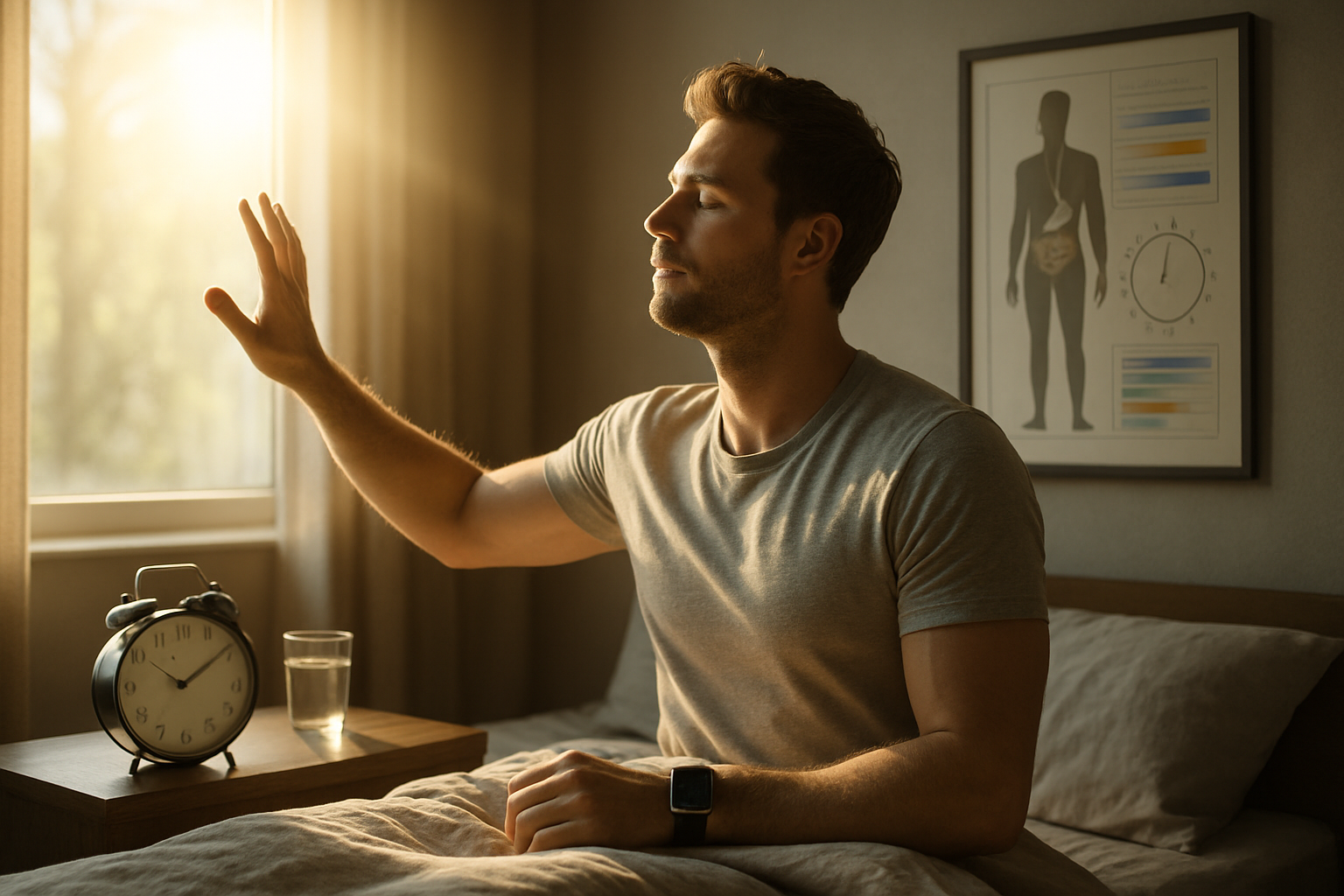Biohacking Your Circadian Rhythm: The Science of Light Therapy
Imagine waking up each morning feeling refreshed, energized, and ready to tackle the day. What if you could optimize your body's natural rhythms to enhance your overall well-being? Welcome to the world of circadian rhythm biohacking through light therapy – a cutting-edge approach to wellness that's revolutionizing how we think about health and productivity.

The Circadian Rhythm: Nature’s Time-Keeper
Our bodies operate on a roughly 24-hour cycle known as the circadian rhythm. This internal clock regulates numerous physiological processes, including sleep-wake cycles, hormone production, body temperature, and metabolism. At the heart of this system is the suprachiasmatic nucleus (SCN), a small region in the brain that acts as our master circadian pacemaker.
The SCN receives light signals through our eyes, which helps synchronize our internal clock with the external environment. This process, known as entrainment, is crucial for maintaining optimal health and well-being. When our circadian rhythms are in sync, we experience better sleep, improved mood, enhanced cognitive function, and even a stronger immune system.
The Rise of Circadian Disruption
In today’s fast-paced, technology-driven world, our natural circadian rhythms face unprecedented challenges. Artificial lighting, late-night screen exposure, shift work, and jet lag are just a few factors that can throw our internal clocks out of whack. This misalignment, known as circadian disruption, has been linked to a host of health issues, including:
-
Sleep disorders
-
Mood disorders, such as depression and anxiety
-
Metabolic dysfunction and weight gain
-
Increased risk of cardiovascular disease
-
Impaired cognitive function and memory
As we become increasingly aware of these challenges, researchers and health experts are turning to innovative solutions to help realign our circadian rhythms with the natural world.
Light Therapy: Harnessing the Power of Photons
Enter light therapy – a non-invasive, drug-free approach to circadian rhythm optimization. By exposing the body to specific wavelengths of light at strategic times, we can effectively reset our internal clocks and combat the effects of circadian disruption.
Light therapy works by mimicking the natural light-dark cycle that our bodies evolved to follow. Exposure to bright light in the morning helps suppress melatonin production (the sleep hormone) and boost cortisol levels, promoting wakefulness and alertness. Conversely, reducing exposure to blue light in the evening helps stimulate melatonin production, preparing the body for restful sleep.
The Science Behind Light Therapy
Recent advancements in chronobiology – the study of biological rhythms – have shed new light on the mechanisms behind light therapy. Research has shown that different wavelengths of light can have varying effects on our circadian system:
-
Blue light (460-480 nm): Most effective at suppressing melatonin and promoting alertness
-
Green light (500-550 nm): Moderately effective at influencing circadian rhythms
-
Red light (620-750 nm): Less disruptive to melatonin production, making it ideal for evening use
By strategically exposing ourselves to these different light wavelengths throughout the day, we can effectively “hack” our circadian rhythms for optimal performance and well-being.
Implementing Light Therapy in Daily Life
Incorporating light therapy into your daily routine doesn’t have to be complicated. Here are some practical ways to leverage the power of light for circadian optimization:
-
Morning light exposure: Aim for 20-30 minutes of bright light exposure within the first hour of waking. This can be achieved through natural sunlight or a light therapy device.
-
Daytime light hygiene: Ensure your work and living spaces are well-lit during the day, preferably with natural light or full-spectrum lighting.
-
Evening blue light reduction: Use blue light blocking glasses or apps that filter blue light from screens in the hours leading up to bedtime.
-
Strategic red light use: Consider using red-light bulbs or lamps in the evening to promote relaxation and melatonin production.
-
Light therapy devices: For those with limited access to natural light, specialized light therapy lamps can provide targeted exposure to specific wavelengths.
Illuminating Facts: Shedding Light on Circadian Rhythm Biohacking
-
Our eyes contain specialized cells called intrinsically photosensitive retinal ganglion cells (ipRGCs) that directly communicate light information to the SCN.
-
The human circadian rhythm is slightly longer than 24 hours, typically averaging around 24.2 hours.
-
Exposure to just 1.5 minutes of blue light can cause a measurable shift in circadian rhythm.
-
Red light therapy has been shown to improve sleep quality and increase melatonin production.
-
Properly timed light exposure can help alleviate symptoms of seasonal affective disorder (SAD).
-
Research suggests that maintaining a consistent circadian rhythm may help protect against certain types of cancer.
-
Light therapy has shown promise in treating non-seasonal depression, particularly when combined with traditional therapies.
A Brighter Future for Health and Wellness
As we continue to unravel the complexities of our circadian rhythms, light therapy emerges as a powerful tool for optimizing health and well-being. By aligning our internal clocks with the natural world, we can unlock a host of benefits, from improved sleep and mood to enhanced cognitive function and metabolic health.
The science of circadian rhythm biohacking through light therapy represents a paradigm shift in how we approach wellness. It reminds us that sometimes, the most profound health solutions lie not in complex medical interventions, but in working harmoniously with our body’s natural processes. As we move forward, embracing this holistic approach to health may just be the key to illuminating a brighter, more balanced future for us all.





